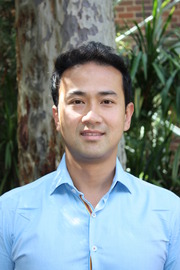21 Jul Peripheral Nerve Stimulation Improves Motor Nerve Function After Spinal Cord Injury
 MedicalResearch.com Interview with:
MedicalResearch.com Interview with:
Dr Michael Lee PhD MPhty MChiro BSc
Discipline of Physiotherapy, Faculty of Health Sciences, The University of Sydney
Clinical Neurophysiologist, The Brain & Mind Research Institute, The University of Sydney
Research Affiliate, Neuroscience Research Australia
Neurology Research Fellow, Institute of Neurological Sciences, Prince of Wales Hospital
Medical Research: What is the background for this study?
Dr. Lee: Our research team at the University of Sydney has previously shown that the functioning of peripheral nerves deteriorate following spinal cord injury (SCI). Using novel, non-invasive electrophysiological techniques (nerve excitability testing), we showed in this study that peripheral nerves below the level of spinal cord injury underwent dramatic functional reorganization. Peripheral nerve dysfunction will not only contribute to a number of undesirable medical complications including peripheral neuropathy and pain, it exacerbates muscle atrophy and can potentially limit the effectiveness of rehabilitative therapies that drive central plasticity. In this study, we were interested to see whether this secondary peripheral nerve dysfunction could be reversed with a short-term targeted peripheral nerve stimulation therapy.
Medical Research: What are the main findings?
Dr. Lee: We studied peripheral nerve function in both the upper (median nerve at the wrist) and lower limbs (peroneal nerve near the fibular head) in 22 patients with acute spinal cord injury (all within 6 months of injury). We then randomly assigned one upper limb and one lower limb nerve to a daily regimen of 30-min peripheral nerve stimulation for 6 week. All study participants continued with standard rehabilitation. The results from our nerve excitability studies showed that 6-weeks of daily stimulation reversed a number of nerve excitability abnormalities secondary to spinal cord injury, and in some cases normalized it to a level comparable to healthy age-matched subjects. The peripheral nerves in the opposite limbs remained dysfunctional over the 6-week period. The results of our study showed convincingly that the addition of peripheral nerve stimulation in the early stages of spinal cord injury is beneficial by ameliorating the downstream effects of spinal cord injury. Spinal cord injuries can be an unfortunate effect of being a car accident, causing serious issues for those who suffer from it whether financial or physical. Those who find themselves in this type of situation may look into contacting someone like these car accident injury lawyers near Sacramento who might be able to help them to get compensation for their accident, which could help with phisyotherapy and medical bills.
Medical Research: What should clinicians and patients take away from your report?
Dr. Lee: The take home message is that the addition of peripheral nerve stimulation is clearly beneficial for improving motor nerve function in patients with spinal cord injury. We don’t believe peripheral nerve stimulation alone was responsible for this improvement, in fact we hypothesize that repetitive stimulation of the nerves improved the biophysical properties of axonal membrane by normalizing various energy-dependent processes and this in turns enhanced the responsiveness of the motor axons to concurrent rehabilitation therapies.
This type of stimulation was tolerated well by all of our study participants. There was no drop out nor report of any adverse reaction. One of our study participants chose to continue the same stimulation regimen after the trial ended for another 18 months, and upon reassessment, the improvement in peripheral nerve function was maintained over the 18 months period.
Our study also highlighted the importance of screening for peripheral nerve dysfunction following spinal cord injury, particularly in patients who developed new motor weakness or sensory loss.
Medical Research: What recommendations do you have for future research as a result of this study?
Dr. Lee: We will need to trial this type of peripheral nerve stimulation therapy on a larger cohort of spinal cord injury patients and perform long-term follow ups to properly evaluate its clinical benefits. Also, as the study was conducted in patients with recent spinal cord injury, future studies which evaluate its effectiveness in patients with chronic SCI will be necessary.
Citation:
Short-term peripheral nerve stimulation ameliorates axonal dysfunction after spinal cord injury
Michael Lee, Matthew C Kiernan, Vaughan G. Macefield, Bonne B. Lee, Cindy S-Y Lin
Journal of Neurophysiology Published 18 March 2015 Vol. no. , DOI: 10.1152/jn.00839.2014
[wysija_form id=”3″]
MedicalResearch.com Interview with: Dr Michael Lee (2015). Peripheral Nerve Stimulation Improves Motor Nerve Function After Spinal Cord Injury
Last Updated on July 21, 2015 by Marie Benz MD FAAD
